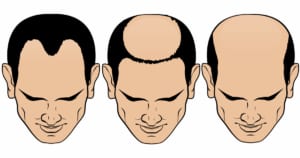Modern Hair Restoration is as close to a medical miracle as you can get. It’s relatively easy to understand how a person can look thinner after liposuction. It doesn’t strike you as rocket science that fat can be suctioned away. It’s even less surprising that plastic surgeons can enhance a woman’s breasts with the simple addition of implants. But to grow natural human hair where there was none before? It never ceases to amaze.
Does a Hair Transplant Solve all Hair Loss?
Hair Transplant Surgery is Easy
What’s even better about a hair transplant is how easy and pain-free of a procedure it is. There are several different methods of hair transplantation, and some are more invasive than others. But compared to other plastic surgery, hair restoration is a walk in the park. Or, rather, a very slow crawl in the park – a hair transplant is not a fast procedure. Depending on how many grafts you are having transplanted, your surgery can take from half a day to a full 8-hour day. Most patients pass the time chatting to their surgeon or specialist, listening to podcasts, or watching TV.

You don’t need general anesthesia to have a hair transplant. A bit of local numbing is usually sufficient to take away the small sting where hair follicles are extracted or re-inserted. It is reapplied as needed throughout your procedure. In the aftermath, you might experience some swelling for several days. Your head will be covered in small red marks that will scab over and heal within a week. Most patients feel perfectly fine within a day or two, ready to return to their regular activities.
So all this is great news if you are balding, right? You book yourself a hair transplant, continue with life while the new hair grows in, and eventually you’re no longer bald. True?
Not quite. To understand the limitations of a hair transplant, let’s talk about how medical hair restoration works.
How Hair Restoration Works
Most balding occurs in a certain pattern. In fact, the most common type of hair loss in men is called male-pattern baldness. Your hairline recedes back towards the top of your head, often at a faster rate in the corners, and your crown begins to thin out. The one place where there remains a healthy growth of hair is the ring around the back of your head.
When you first meet with your hair restoration consultant, he or she will assess your hair loss type. Where are the balding areas, and how many grafts will be needed to restore your hairline and fill in your crown the way you imagine? At this stage, it’s important to manage your expectations. The more healthy hair you have in relation to your balding areas, the easier it is to harvest from (and thereby thin out) this healthy hair without it being noticeable. But if your baldness is more advanced, this becomes harder to do. Once the area of healthy hair becomes smaller than the bald area, it becomes increasingly more difficult to achieve a full head of hair with a hair transplant. This is when you may reach the limits of hair transplant surgery.

Managing Your Expectations of a Hair Transplant
This doesn’t mean that you should lose heart entirely if your balding is more severe. Even entirely bald areas can be transformed. It’s not a matter of how bald a particular spot is. Once you transplant hair follicles, they grow in their new area, whether it was just thinning out or entirely bald. More important is the size of the area of healthy hair. The larger it is, the more hair you have available to be transplanted.
If you look at before and after pictures of hair transplants, you will some incredible transformations, even with varying degrees of baldness. The important thing is to be realistic. You wouldn’t be happy if your hair clinic promised you a mane of hair when it’s more realistic to expect modest growth.
At Nashville Hair Doctor, we take extreme care in giving you a realistic assessment. If you’re not sure what hair loss type you are and what results you can expect, let us assess you for a quote. It’s super easy and it’s completely free. Simply upload your picture(s) to request an online quote, and our consultant will reach out to you to give you a quote. We won’t overpromise or talk you into something bigger than you need. And we will give you plenty of time to do your research and make a decision without badgering you. We know it’s not an easy decision to take this step. But we also know that it’s one that you won’t regret!

